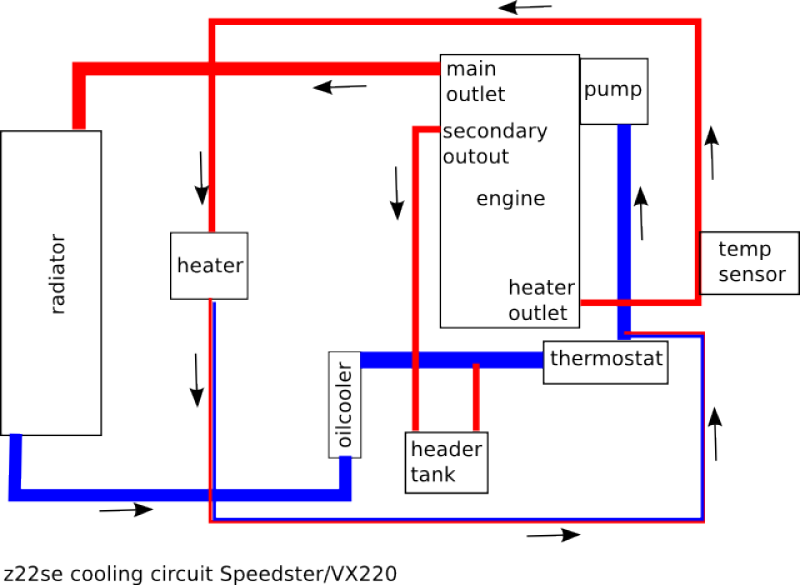Out of curiosity why did they fit the thermostat just before the pump and not at the outlet point on the head?
This is now a common design feature on many modern engines. Thermostat is on the pump intake side and a bypass system is the 'trigger' for it to open.
In some cases (eg. Toyota 1KR-FE engine) the thermostat operation is even 'reversed' where all ports are 'open' when it's cold (flow will follow the path of least resistance through the bypass) and the bypass circuit is slowly closed off (pump sucking coolant from the radiator) as it heats up.
Some of it is probably packaging/layout driven, but the main reason is that modern engine thermal design doesn't try to stabilise the temperature of the coolant coming OUT of the engine (like a thermostat at the outlet would do), but tries to stabilise the coolant temperature going INTO the engine.
This reduces thermal cycling and distortion issues inside the block and head and is good for longlevity of the engine and headgaskets and such. (if done properly

)
Some engines now even use a thermostat setup where the 'bypass' size is as big as the main coolant hose size to not only stabilise the temperatures, but also to try to keep the coolant flow rate at a constant (or at least linear to the rpm's) irrespective if the thermostat is 'open' or 'closed'. These often have thermostat elements with double valves, so when the radiator circuit starts to open it slowly closes off the bypass port at the same time keeping the total flow the same.
Bye, Arno.


















